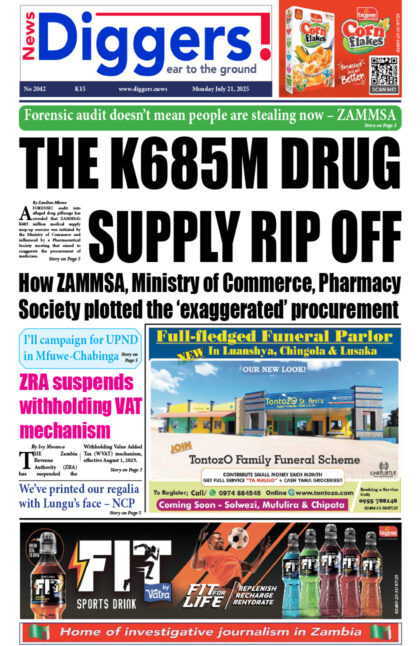Mines Minister Richard Musukwa says government will kick-start a lead treatment campaign in Kabwe next month following revelations by the Human Rights Watch (HRW), which disclosed that children were exposed to lead poisoning in the area.
According to an HRW Report dubbed: “We Have to Be Worried: The Impact of Lead Contamination on Children’s Rights in Kabwe, Zambia,” lead exposure around a former lead and zinc mine in Zambia was having disastrous effects on children’s health.
In a press release issued by Children’s Rights Division Associate Director, Juliane Kippenberg, after the launch of the report in Johannesburg, Thursday, the HRW recommended that the Zambian government should promptly clean up the contamination and ensure proper treatment for all who need it.
The Ministry of Mines had banned the HRW from launching their report on lead contamination in Zambia, calling it an “attempt to discredit the government.”
But in a briefing, Wednesday, Musukwa announced that government would kick-start a lead treatment campaign in Kabwe next month, pledging that the campaign will bear positive results.
“Government is in the first instance is fully aware of the impact of the lead pollution in Kabwe and has a duty towards its people and is taking proactive steps in ensuring that a sustainable intervention is provided, which goes just beyond the project which is being undertaken. I am pleased to inform you that drugs to treat children affected by lead have been procured and the blood lead level testing treatment campaign, which will begin in September, 2019, will bear fruits once all the facets of the programme are put in place,” Musukwa said.
“In short, the programme that is bearing fruit is the scoping programme for this undertaking so that the catchment area for the people, especially the children who are affected, are identified.”
He, however, said it would be difficult to relocate residents due to the huge expenditure involved.
“The mandate of the Zambia Mining Environmental Remedial And Improvement Project is to see how best we can make the environment where mining operations taking place safe, and if we have critical areas, to relocate the people that is where I have said government will continue to mobilize resources and see how best this can be managed. But as for now, we would like to ensure that people in these hot-spot areas are dealing with the discharge of the historical components of issues, such as lead in these areas. That is our position,” he added.
“As you are aware, the Ministry, through Mine Safety (Department) is empowered once an assessment has be made for any mining operation that endangers our people to relocate them, but like my Director has indicated, this a process, which you need huge sums of money and in terms of relocating at a platform of a mining operation, the onus is on the mining house and so we enforce the provision. So, in this case, government has moved to see how we can mitigate the challenges, which the lead and other pollutants has brought to our environment.”
And Musukwa announced that a US $65.6 million agreement, which was made with the World Bank in 2017, had enhanced the fight in upholding environment safety in mining areas.
“Government made an agreement with the World Bank on the May 29, 2017, and acquired resources in excess of US $65.6 million to support the programmes, which have to do with various environmental safety of our people; education to environmental health risks to the local populations relating to the mining activities in critical populated areas in selected towns of Chingola, Kitwe, and Mufulira on the Copperbelt and Kabwe in Central Province. The Zambia Mining Environmental Remediational and Improvement Project is a flagship project where a developing country against other deserving demands went out to look for resources for environmental clean-up, not only in Kabwe, but other selected towns as I have indicated on the Copperbelt, namely: Chingola, Kitwe and Mufulira,” said Musukwa.



















